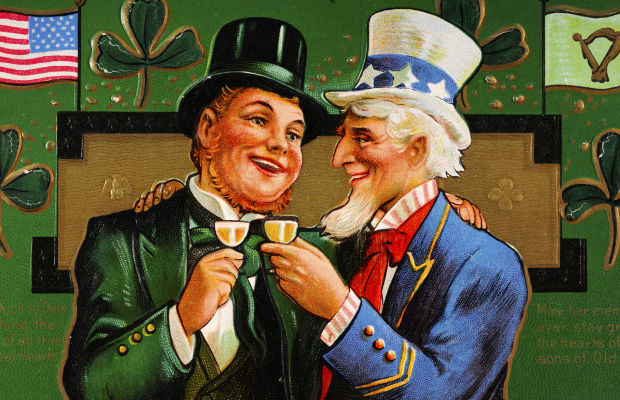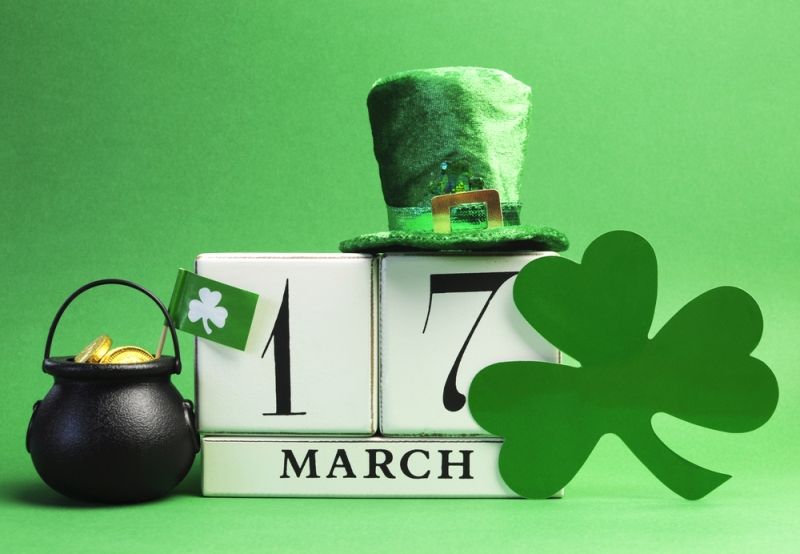St. Patrick may be the patron saint of Ireland, however many St. Patrick’s Day traditions were born in the United States.
Every March 17, the United States ends up being an emerald nation for a day. Americans wear green clothes and quaff a green beer. Green milkshakes, bagels, and grits appear on menus. In a leprechaun-worthy shenanigan, Chicago even dyes its river green.
Revelers from coast to coast celebrate all things Irish by hoisting pints of Guinness and cheering bagpipers, action dancers and marching bands parading through city streets. These familiar annual traditions weren’t imported from Ireland, however. They were made in America.
In contrast to the merry-making in the United States, March 17 has actually been more holy day than a holiday in Ireland. Given that 1631, St. Patrick’s Day has actually been a religious feast day to commemorate the anniversary of the 5th-century death of the missionary credited with spreading Christianity to Ireland. For a number of centuries, March 17 was a day of solemnity in Ireland with Catholics participating in the church in the morning and partaking of modest feasts in the afternoon. There were no parades and certainly no emerald-tinted foodstuff, especially considering that blue, not green, was the standard color associated with Ireland’s tutelary saint prior to the 1798 Irish Rebellion.

Boston has actually long staked claim to the very first St. Patrick’s Day celebration in the American nests. On March 17, 1737, more than 2 lots Presbyterians who emigrated from the north of Ireland collected to honor St. Patrick and form the Charitable Irish Society to assist distressed Irishmen in the city. The oldest Irish company in North America still holds an annual supper every St. Patrick’s Day.
Historian Michael Francis, however, uncovered evidence that St. Augustine, Florida, may have hosted America’s very first St. Patrick’s Day event. While researching Spanish gunpowder expense logs, Francis found records that indicate cannon blasts or shooting were utilized to honor the saint in 1600 which homeowners of the Spanish fort town processed through the streets in honor of St. Patrick the following year, maybe at the behest of an Irish priest living there.
Paradoxically, it was a band of Redcoats who started the storied green custom of America’s largest and longest St. Patrick’s Day parade in 1762 when Irish-born soldiers serving in the British Army marched through lower Manhattan to a St. Patrick’s Day breakfast at a local tavern. The March 17 parades by the Irish through the streets of New York City raised the ire of nativist, anti-Catholic mobs who began their own custom of “paddy-making” on the eve of St. Patrick’s Day by setting up effigies of Irishmen wearing rags and necklaces of potatoes with scotch bottles in their hands till the practice was prohibited in 1803.
After Irish Catholics flooded into the country in the years following the failure of Ireland’s potato crop in 1845, they hold on to their Irish identities and took to the streets in St. Patrick’s Day parades to reveal strength in numbers as a political retort to nativist “Know-Nothings.”.
” Many who were required to leave Ireland throughout the Great Cravings brought a lot of memories, however, they didn’t have their country, so it was an event of being Irish,” says Mike McCormack, nationwide historian for the Ancient Order of Hibernians. “But there was also a little defiance because of the bigotry by the Know-Nothings versus them.”.
McCormack states mindsets towards the Irish started to soften after 10s of countless they served in the Civil War. “They went out as second-class residents however returned as heroes,” he states. As the Irish gradually assimilated into American culture, those without Celtic blood began to participate in St. Patrick’s Day celebrations.
The meal that became a St. Patrick’s Day staple throughout the nation– corned beef and cabbage– was likewise an American development. While ham and cabbage were consumed in Ireland, corned beef proved a more affordable alternative to impoverished immigrants. McCormack says corned beef ended up being a staple of Irish-Americans residing in the shanty towns of lower Manhattan who purchased leftover arrangements from ships returning from the tea sell China.
” When ships entered South Street Seaport, lots of women would diminish to the port hoping there was leftover salted beef they might obtain from the ship’s cook for a cent a pound,” McCormack says. “It was the cheapest meat they might discover.” The Irish would boil the beef three times– the last time with cabbage– to remove some of the brine.
While St. Patrick’s Day progressed in the 20th century into a party day for Americans of all ethnicities, the celebration in Ireland stayed solemn. The Connaught Telegraph reported of Ireland’s commemorations on March 17, 1952: “St. Patrick’s Day was very much like any other day, only duller.” For years, Irish laws restricted bars from opening on holy days such as March 17. Until 1961, the only legal location to get a drink in the Irish capital on St. Patrick’s Day was the Royal Dublin Canine Program, which naturally brought in those with just a passing canine interest.
The celebration atmosphere only infected Ireland after the arrival of the tv when the Irish might see all the fun being had across the ocean. “Modern Ireland took a cue from America,” McCormack states. The multi-day St. Patrick’s Day Celebration, released in Dublin in 1996, now brings in one million people each year.
The Irish are now adopting St. Patrick’s Day traditions from Irish America such as corned beef and cabbage, McCormack says. There are some American traditions, nevertheless, that may not catch on in Ireland, such as green Guinness. As McCormack states, “St. Patrick never ever consumed green beer.”.



